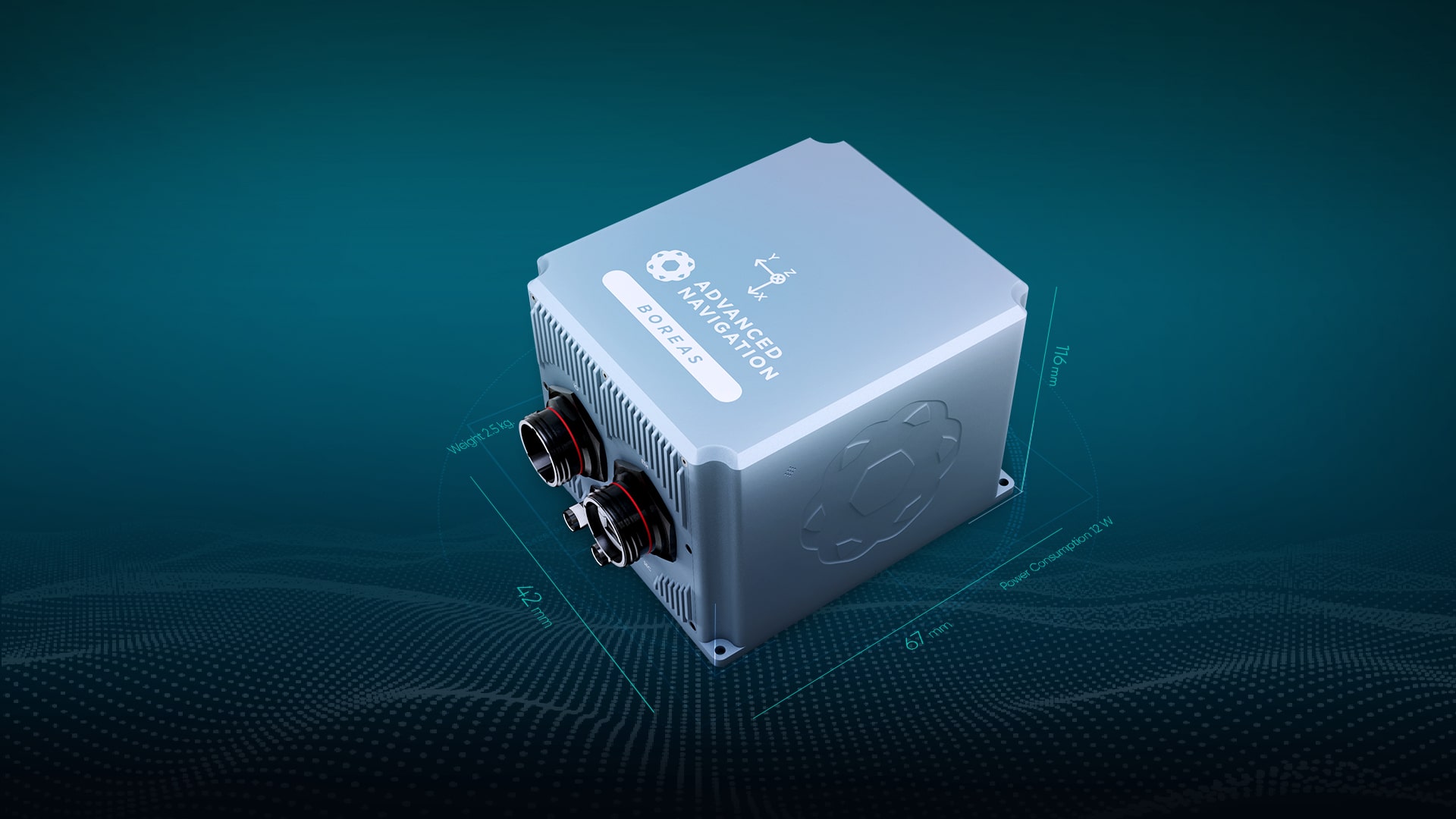
Launching Boreas, The World’s First Fully Digital FOG

Published on:
Advanced Navigation is pleased to announce their new range of fiber optic gyroscope inertial navigation systems (INS), Boreas.
The Boreas is an ultra-high accuracy, strategic-grade INS, offering a 40% reduction in size, weight, power, and cost relative to competing systems. Boreas is the first product to be released that is based on Advanced Navigation’s new DFOG (Digital Fibre Optic Gyroscope) technology, which is the culmination of 25 years of development involving two research institutions.
The Boreas is targeted at applications requiring always available, ultra-high accuracy orientation and navigation including marine, surveying, subsea, aerospace, robotics, and space.
Advanced Navigation’s CEO, Xavier Orr said “Boreas is the first product on the market to offer our patent-pending DFOG technology. DFOG represents a step-change for fibre optic gyroscopes. With Boreas’ ultra-high accuracy and strategic-grade performance combined with the reduction of size, weight, power and cost by 40%, we will be able to enable new industries and applications that were never possible before.”
The Boreas delivers strategic-grade bias stability of 0.001 deg/hr. This allows the Boreas to achieve ultra-high roll/pitch accuracy of 0.005 degrees and heading accuracy of 0.006 degrees. Boreas allows for full GPS independence with dead reckoning accuracy of 0.01% distance traveled with an odometer or DVL.
This next-generation FOG features ultra-fast gyro compassing, taking only 2 minutes to acquire heading in both stationary environments or on the move. The gyro compassing allows the system to determine a highly accurate heading of 0.01 degrees secant latitude without any reliance on magnetic heading or GPS.
Boreas contains Advanced Navigation’s revolutionary sensor fusion algorithm. This algorithm is more intelligent than the typical extended Kalman filter and is able to extract significantly more information from the data by making use of human inspired artificial intelligence. It was designed for control applications, with a high level of health monitoring and instability prevention to ensure stable and reliable data.
Advanced Navigation has designed Boreas from the ground up for reliability and availability. Both the hardware and software are designed and tested to safety standards and it has been environmentally tested to mil standards. The system is designed for a mean time between failures of 500,000 hours. Additional features of the Boreas include Ethernet, CAN and NMEA protocols, as well as a disciplined timing server providing PTP. A rich, responsive embedded web interface provides full access to all of the device’s internal functions and data. Internal storage allows for up to 1 year of data logging.
About DFOG Technology
DFOG is patent-pending technology, which has been developed over 25 years involving two research institutions. DFOG was created to meet the demand for smaller and more cost-effective FOGs, while increasing reliability and accuracy.
The first generation of FOG made available in 1976 used analog signals and analog signal processing. The second generation was developed in 1994 and is still used to this day. It improved upon the first generation with a hybrid approach using an analog signal in the coil with digital signal processing.
In 2021, FOG has evolved into DFOG. This third generation of FOG sets itself apart by being completely digital, providing higher performance and reliability while enabling a 40% reduction in size, weight, power, and cost.
To achieve this, three different, yet complementary, technologies have been developed to improve the capabilities of FOG.
- Digital Modulation Techniques: DFOG uses a specially developed digital modulation technique passing spread spectrum signals through the coil. The new digital modulation technique introduced in DFOG technology allows in-run variable errors in the coil to be measured and removed from the measurements. This makes DFOG significantly more stable and reliable than traditional FOGs. It also allows a smaller FOG with less coil length to achieve the accuracy of one with a longer coil.
- Revolutionary Optical Chip: By integrating 5 sensitive components into a single chip and removing all the fiber splices, the size, weight, and power are reduced considerably while significantly improving reliability and performance.
- Specially Designed Optical Coil: DFOG employs a specially designed closed-loop optical coil, developed to take full advantage of the digital modulation techniques. The design allows for optimum sensing of in-run variable coil errors using the new digital modulation technique. It also provides a very high level of protection for the optical components from shock and vibration.
Distinguished Professor Arnan Mitchell, the Director of the Integrated Photonics and Applications Centre at RMIT University, was a key partner in developing DFOG technology with Advanced Navigation. Professor Mitchell is a noted authority on microtechnology and nanotechnology whose work on shrinking components of a fiber optic gyroscope onto a single chip proved to be one of the key components of DFOG’s revolutionary technology. This innovation is what allows DFOG to have a significantly lower SWaP-C than other similar FOGs, all the while delivering higher accuracy and reliability.
“By printing optical components onto a tiny chip, we are creating more compact and reliable fiber optic gyroscopes with Advanced Navigation” says Professor Mitchell.
About Advanced Navigation
Advanced Navigation is a global leader in navigation and autonomous systems. By leveraging capabilities in software-enhanced hardware, every solution delivers unrivaled capabilities and exceptional performance across land, air, sea and space applications where GPS is unreliable. Made possible with extensive research, testing and vertically integrated manufacturing, the company has progressed into deep technology fields, including robotics, inertial, photonic and quantum sensing, artificial intelligence, underwater acoustics, and GPS antennas and receivers. Customers choose Advanced Navigation for rapid product delivery and unmatched technical field expertise. Headquartered in Sydney, Australia, with research and production facilities nationwide and offices globally. Advanced Navigation is an Australian manufacturer exporting worldwide. #JoinTheAutonomyRevolution
